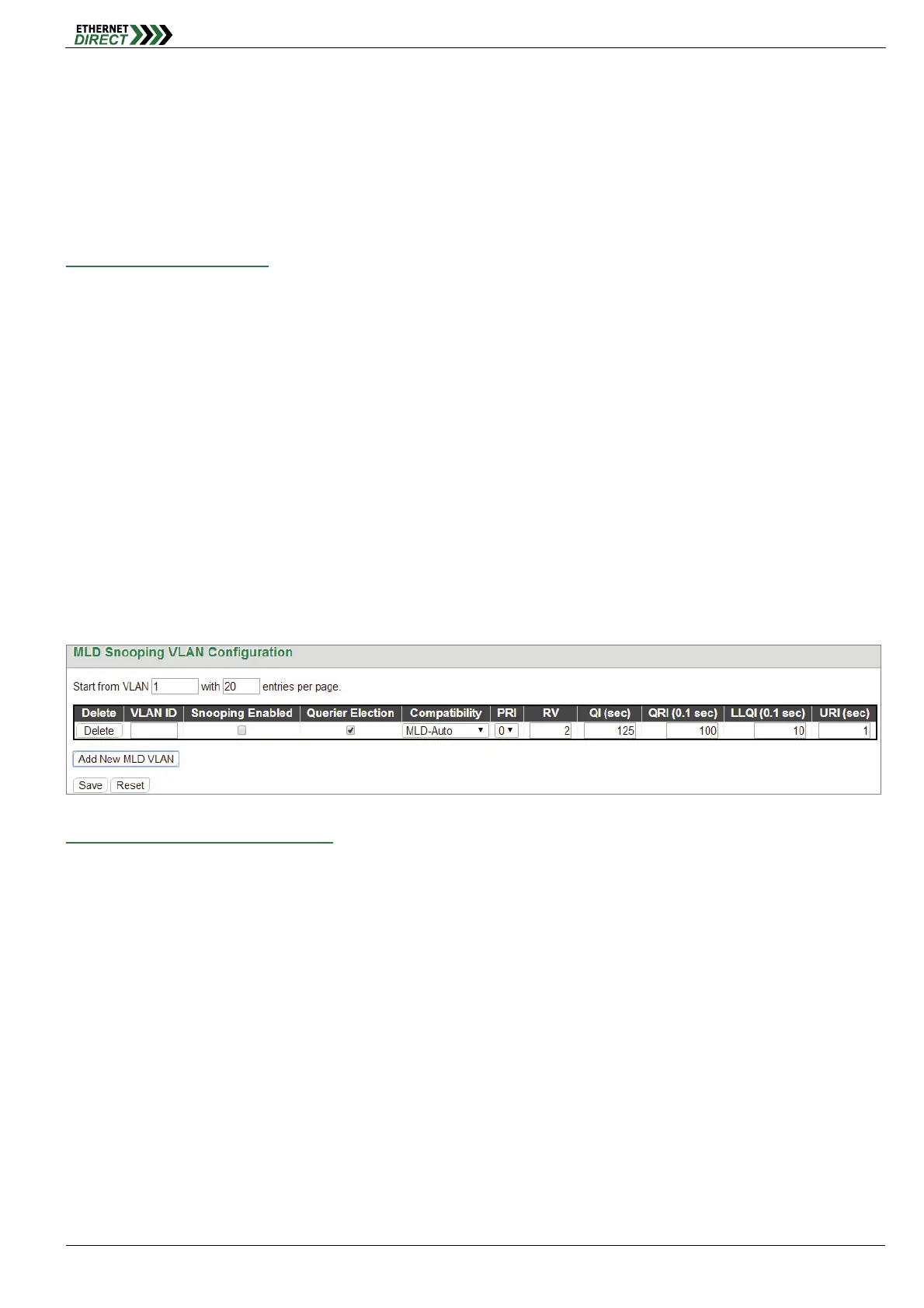IPMC
HMG-838PT & HMG-838EPT Web Configuration 10-7
upstream interface, and performs the host portion of the MLD task on the upstream interface as follows:
When queried, it sends multicast listener reports to the group.
When a host joins a multicast group to which no other host belongs, it sends unsolicited multicast listener
reports to that group.
When the last host in a particular multicast group leaves, it sends an unsolicited multicast listener done
report to the all-routers address (FF02::2) for MLDv1.
Port Related Configuration:
Port: The port number.
Router Port: Tick the checkbox on a given port to assign it as a router port. If MLD snooping cannot locate the
MLD querier, you can manually designate a port which is connected to a known MLD querier (i.e., a multicast
router/switch). This interface will then join all the current multicast groups supported by the attached router/switch
to ensure that multicast traffic is passed to all appropriate interfaces within the switch.
Fast Leave: Enable fast leave function if the checkbox is ticked. When a leave packet is received, the switch
immediately removes it from a multicast service without sending a MLD group-specific (GS) query to that
interface.
Throttling: This field limits the maximum number of multicast groups that a port can join at the same time. When
the maximum number is reached on a port, any new MLD join reports will be dropped. By default, unlimited is
selected. Other allowed options are 1~10.
10-2.2 VLAN Configuration
This page is used to configure MLD Snooping for an interface.
MLD Snooping VLAN Configuration:
VLAN ID: Specify VLAN ID for MLD snooping.
Snooping Enabled: Select the checkbox to enable snooping feature on an interface basis. When enabled, the
switch will monitor network traffic on the specified interface to determine which hosts want to receive multicast
services.
Querier Election: Enable to join querier election in the VLAN. When enabled, the switch can serve as the MLDv2
querier in the bidding process with other competing multicast routers or switches. Once it becomes querier, it will
be responsible for asking hosts periodically if they want to receive multicast traffic. When disabled, it will act as an
IGMP non-querier.
Compatibility: This configures how hosts and routers take actions within a network depending on MLD version
selected. Available options are “MLD-Auto”, “Forced MLDv1”and “Forced MLDv2”. By default, MLD-Auto is used.
PRI: Select the priority of interface. This field indicates the MLD control frame priority level generated by the
system which is used to prioritize different classes of traffic. The allowed range is 0 (best effort) to 7 (highest). By
default, interface priority value is set to 0.
RV: The robustness variable (RV) allows tuning for the expected packet loss on a subnet. If a subnet is
susceptible to packet loss, this value can be increased. The RV value must not be zero and should not be one.
